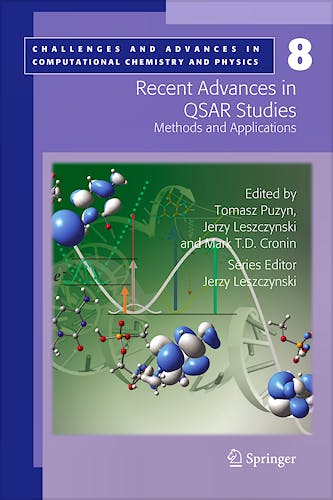

No hay productos en el carrito



Recent Advances in Qsar Studies, Vol. 8
Puzyn, T.
1ª Edición Enero 2010
Inglés
Tapa dura
423 pags
2500 gr
null x null x null cm
ISBN 9781402097829
Editorial SPRINGER
About this book
- An interdisciplinary overview on recent advances in Quantitative Structure–Activity Relationships (QSAR) studies
- Presents both a review of new ideas about methodology and new areas of QSAR applications
- A simply written, practical guide for academics, industrial scientists and decision makers taking their first steps in QSAR analysis
Recent Advances in QSAR Studies: Methods and Applications presents an interdisciplinary overview on the most recent advances in QSAR studies. The first part of this volume is handbook-esque and consists of a comprehensive review of QSAR methodology written by outstanding scientists and highly experienced lecturers. It focuses on methodology and new ideas, providing readers with an idea of recent trends and developments in each part of QSAR strategy (descriptors, methods of modelling, validation). The second part of this volume highlights the interdisciplinary aspects and new areas of QSAR modelling. It outlines the theoretical framework together with practical applications. The most optimal solutions (descriptors, mathematical/statistical methods, validation) in the individual areas of interest (environmental risk assessment, drug design, etc.) are also discussed in more detail.
Recent Advances in QSAR Studies: Methods and Applications is targeted at scientists who are focussed on developing new methodologies as well as researchers who are engaged in trying to solve specific problems via QSAR. Additionally, this volume should serve as an essential reference to promote interactions between members of the academic community and industry.
Written for » Research
Keywords » QSAR - Quantitative Structure–Activity
Relationships - modelling - molecular descriptors
Related subjects » Characterization & Evaluation
of Materials - Chemistry
Table of contents
Part I Theory of QSAR
- 1 Quantitative Structure-Acticity Relationships (QSAR) – Applications
and Methodology
Mark T. D. Cronin - 2 The Use of Quantum Mechanics Derived Descriptors in Computational Toxicology
Steven J. Enoch - 3 Molecular Descriptors
Viviana Consonni, Roberto Todeschini - 4 3D-QSAR – Applications, Recent Advances and Limitations
Wolfgang Sippl - 5 Virtual Screening and Molecular Design Based on Hierarchical QSAR Technology
Victor E. Kuz’min, A. G. Artemenko, Eugene N. Muratov, P. G. Polischuk, L. N. Ognichenko, A. V. Liahovsky, A. I. Hromov, E. V. Varlamova - 6 Robust Methods in QSAR
Michal Daszykowski, Ivana Stanimirova, Beata Walczak - 7 Chemical Category Formation and Read Across for the Prediction of Toxicity
Steven J. Enoch
Part II Practical Applications
- 8 QSAR in Chromatography: Quantitative Structure-Retention Relationships
(QSRR)
Roman Kaliszan, Tomasz Baczek - 9 The Use of QSAR and Computational Methods in Drug Design
Fania Bajot - 10 In Silico Approaches for Predicting ADME Properties
Judith C. Madden - 11 Prediction of Harmful Human Health Effects of Chemicals from Structure
Mark T.D. Cronin - 12 Chemometric Methods and Theoretical Molecular Descriptors in Predictive
QSAR Modeling of the Environmental Behaviour of Organic Pollutants
Paola Gramatica - 13 The Role of QSAR Methodology in the Regulatory Assessment of Chemicals
Andrew P. Worth - 14 Nanomaterials – the Next Great Challenge for QSAR Modelers
Tomasz Puzyn, Agnieszka Gajewicz, Danuta Leszczynska, Jerzy Leszczynski
© 2025 Axón Librería S.L.
2.149.0